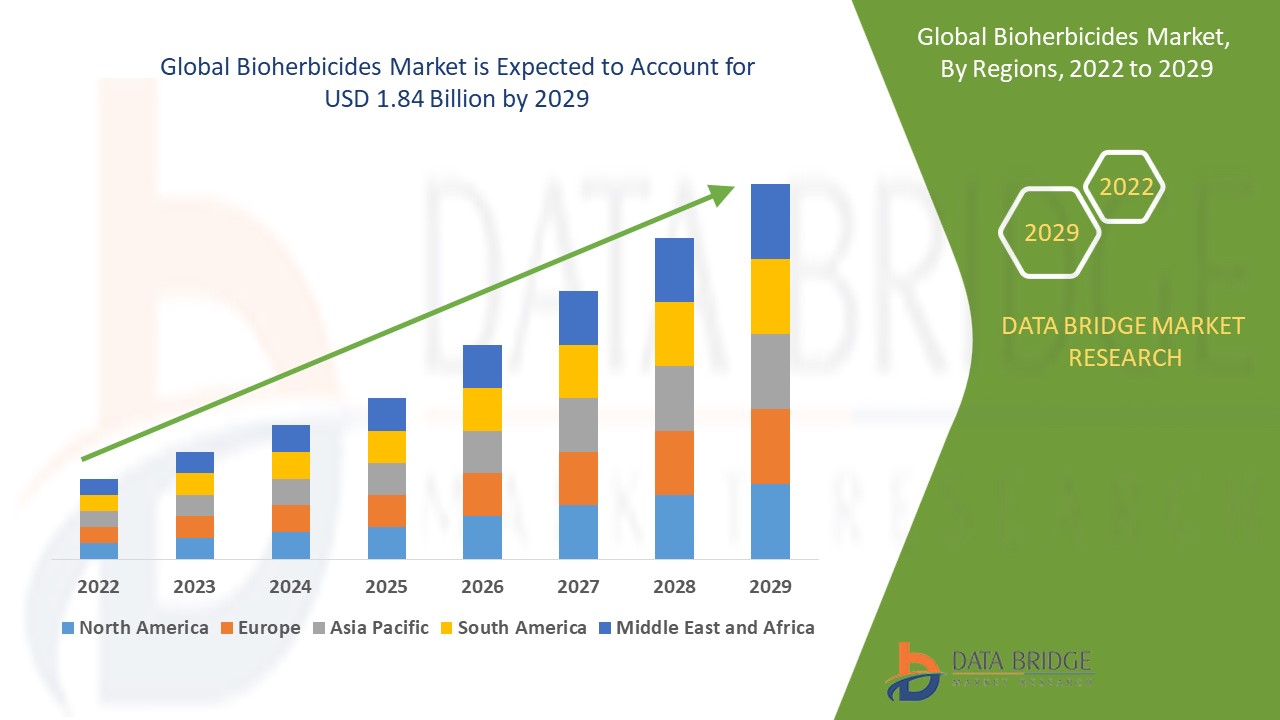The bioherbicides market represents a burgeoning sector within the agricultural industry, offering environmentally friendly alternatives to traditional chemical herbicides. These biological agents, derived from natural sources like microorganisms and plant extracts, provide a more sustainable approach to weed management.
Market Size
The global bioherbicides market is experiencing significant growth, driven by increasing environmental concerns, stricter regulations on synthetic chemicals, and a growing demand for organic and sustainable agricultural practices. While still smaller than the conventional herbicide market, the bioherbicides market is projected to expand considerably in the coming years, representing a multi-million dollar industry with strong growth potential.
The Global Bioherbicides Market size was valued at USD 1.74 billion in 2024 and is projected to reach USD 2.63 billion by 2032, with a CAGR of 5.26% during the forecast period of 2025 to 2032. In addition to the insights on market scenarios such as market value, growth rate, segmentation, geographical coverage, and major players, the market reports curated by the Data Bridge Market Research also include import export analysis, production capacity overview, production consumption analysis, price trend analysis, climate change scenario, supply chain analysis, value chain analysis, raw material/consumables overview, vendor selection criteria, PESTLE Analysis, Porter Analysis, and regulatory framework.
For more information, visit https://www.databridgemarketresearch.com/reports/global-bioherbicides-market
Market Share
- Source Segmentation: Microbial-based bioherbicides currently hold a significant market share due to their efficacy and wider availability. Plant-based bioherbicides and other natural compounds are also gaining traction.
- Application Focus: Row crops, fruits and vegetables, and turf and ornamentals represent key application segments, with row crops often accounting for the largest share due to the vast acreage under cultivation.
- Geographical Distribution: North America and Europe currently hold a substantial market share, driven by stringent environmental regulations and a higher adoption rate of organic farming. Asia-Pacific and Latin America are emerging as significant growth regions due to increasing awareness and government support for sustainable agriculture.
- Key Industry Players: Companies like Bayer CropScience (now part of BASF), Marrone Bio Innovations (now part of Bioceres Crop Solutions), and Certis Biologicals are key players in the bioherbicides market, investing in research, development, and commercialization of these green solutions.
Market Opportunities
The bioherbicides market presents numerous compelling opportunities for growth and innovation:
- Growing Demand for Organic Food: The increasing consumer demand for organic and residue-free food products is a major driver for the adoption of bioherbicides.
- Stricter Regulations on Chemical Herbicides: Governments worldwide are implementing stricter regulations on synthetic herbicides due to their potential environmental and health risks, creating a favorable environment for bioherbicides.
- Development of Novel Bioherbicides: Ongoing research and development are leading to the discovery and commercialization of more effective and broad-spectrum bioherbicides.
- Integrated Pest Management (IPM) Strategies: Bioherbicides are increasingly being incorporated into integrated pest management strategies, offering a more holistic and sustainable approach to weed control.
- Technological Advancements: Advancements in formulation and delivery technologies are improving the efficacy and ease of use of bioherbicides.
Market Challenges
Despite its promising outlook, the bioherbicides market faces several challenges:
- Efficacy and Consistency: Bioherbicides can sometimes exhibit lower efficacy and consistency compared to synthetic herbicides, particularly under varying environmental conditions.
- Shelf Life and Storage: The shelf life and storage requirements of some bioherbicides can be more demanding than those of chemical herbicides.
- Cost Competitiveness: Bioherbicides can sometimes be more expensive than conventional herbicides, posing a barrier to adoption for some farmers.
- Limited Awareness and Education: There is still a need for greater awareness and education among farmers regarding the benefits and proper use of bioherbicides.
- Regulatory Hurdles: The registration and approval processes for bioherbicides can sometimes be lengthy and complex.
Market Demand
The demand for bioherbicides is driven by several key factors:
- Environmental Concerns: Growing awareness of the negative environmental impacts of synthetic herbicides is a major driver for the adoption of bioherbicides.
- Human Health Concerns: Concerns about the potential health risks associated with pesticide residues in food are increasing the demand for safer alternatives like bioherbicides.
- Resistance to Chemical Herbicides: The increasing development of weed resistance to conventional herbicides is making bioherbicides a valuable tool for sustainable weed management.
- Government Support for Sustainable Agriculture: Governments worldwide are promoting and supporting the adoption of sustainable agricultural practices, including the use of bioherbicides.
- Consumer Preference for Sustainable Products: Consumers are increasingly willing to pay a premium for sustainably produced food, incentivizing farmers to adopt eco-friendly practices.
Market Trends
Several key trends are shaping the future of the bioherbicides market:
- Increased Research and Development: Significant investments are being made in research and development to discover and commercialize more effective and broad-spectrum bioherbicides.
- Development of Novel Delivery Systems: Innovative delivery systems, such as microencapsulation and targeted application technologies, are being developed to improve the efficacy and reduce the application rates of bioherbicides.
- Integration with Digital Agriculture: Bioherbicides are increasingly being integrated with digital agriculture platforms for precision application and optimized weed management.
- Partnerships and Collaborations: Strategic partnerships and collaborations between research institutions, agricultural companies, and government agencies are accelerating the development and commercialization of bioherbicides.
- Focus on Soil Health: The growing recognition of the importance of soil health is driving the adoption of bioherbicides as a tool for promoting a healthy soil microbiome.
In conclusion, the bioherbicides market represents a significant shift towards more sustainable agricultural practices. Driven by environmental concerns, regulatory changes, and consumer demand for organic food, this market offers substantial opportunities for growth and innovation. Overcoming the existing challenges through continued research, technological advancements, and increased awareness will be crucial for realizing the full potential of bioherbicides in cultivating a greener future for agriculture.




